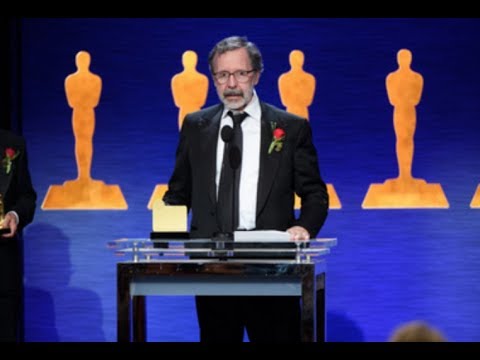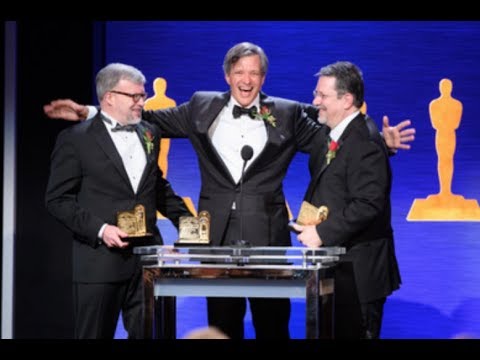TECHNICAL ACHIEVEMENT AWARDS (ACADEMY CERTIFICATES)
To Eric Dachs, Erik Bielefeldt, Craig Wood and Paul McReynolds for the design and development of the PIX System’s novel security mechanism for distributing media.
PIX System’s robust approach to secure media access has enabled wide adoption of their remotely collaborative dailies-review system by the motion picture industry.
To Per-Anders Arvid Edwards for the initial design and development of the MoGraph toolset in Cinema 4D for motion graphics.
MoGraph provides a fast, non-destructive and intuitive workflow for motion designers to create animated 3D graphics, as used for title design and fictional user interfaces in motion pictures.
To Paul Thomas Miller for the software design, principal engineering and continued innovation, and to Marco Paolini for the efficient, artist-friendly workflow design of the Silhouette rotoscope and paint system.
Silhouette provides a comprehensive solution for painting, rotoscoping and image manipulation of high-resolution image sequences. Its fast, scalable and extensible architecture has resulted in wide adoption in motion picture post-production.
To Paul Debevec, Timothy Hawkins and Wan-Chun Ma for the invention of the Polarized Spherical Gradient Illumination facial appearance capture method, and to Xueming Yu for the design and engineering of the Light Stage X capture system.
Polarized Spherical Gradient Illumination was a breakthrough in facial capture technology allowing shape and reflectance capture of an actor’s face with sub-millimeter detail, enabling the faithful recreation of hero character faces. The Light Stage X structure was the foundation for all subsequent innovation and has been the keystone of the method’s evolution into a production system.
To Thabo Beeler, Derek Bradley, Bernd Bickel and Markus Gross for the conception, design and engineering of the Medusa Performance Capture System.
Medusa captures exceptionally dense animated meshes without markers or makeup, pushing the boundaries of visual fidelity and productivity for character facial performances in motion pictures.
To Charles Teorell Loop for his influential research on the fundamental scientific properties of subdivision surfaces as 3D geometric modeling primitives.
Loop’s 1987 master’s thesis, “Smooth Subdivision Surfaces Based on Triangles,” together with his subsequent research and publications, extended the theory of subdivision surfaces and inspired further development of methods that transformed the way digital artists represent 3D geometry throughout the motion picture industry.
SCIENTIFIC AND ENGINEERING AWARDS (ACADEMY PLAQUES)
To David Simons, Daniel Wilk, James Acquavella, Michael Natkin and David M. Cotter for the design and development of the Adobe After Effects software for motion graphics.
After Effects’ pioneering use of consumer hardware to host an application that is extensible, efficient and artist-focused has made it the preeminent motion graphics tool in film production, allowing motion designers to create complex animated elements for title design, screen graphics and fictional user interfaces.
To Thomas Knoll and John Knoll for the original architecture, design and development, and to Mark Hamburg for his continued development and engineering of Adobe Photoshop.
Photoshop’s efficient, extensible architecture, innovative virtual-memory design and powerful layering system introduced a new level of user interactivity, which led to its adoption as the preferred artistic tool for digital painting and image manipulation across the motion picture industry.
To Edwin Catmull for the original concept, and to Tony DeRose and Jos Stam for their pioneering advancement of the underlying science of subdivision surfaces as 3D geometric modeling primitives.
Their creation of essential geometric operations and sustained research on the fundamental mathematics of subdivision surfaces helped transform the way digital artists represent 3D geometry throughout the motion picture industry.
JOHN A. BONNER AWARD (Medallion)
Curtis Clark
Presented to an individual in recognition of extraordinary service to the motion picture industry.





